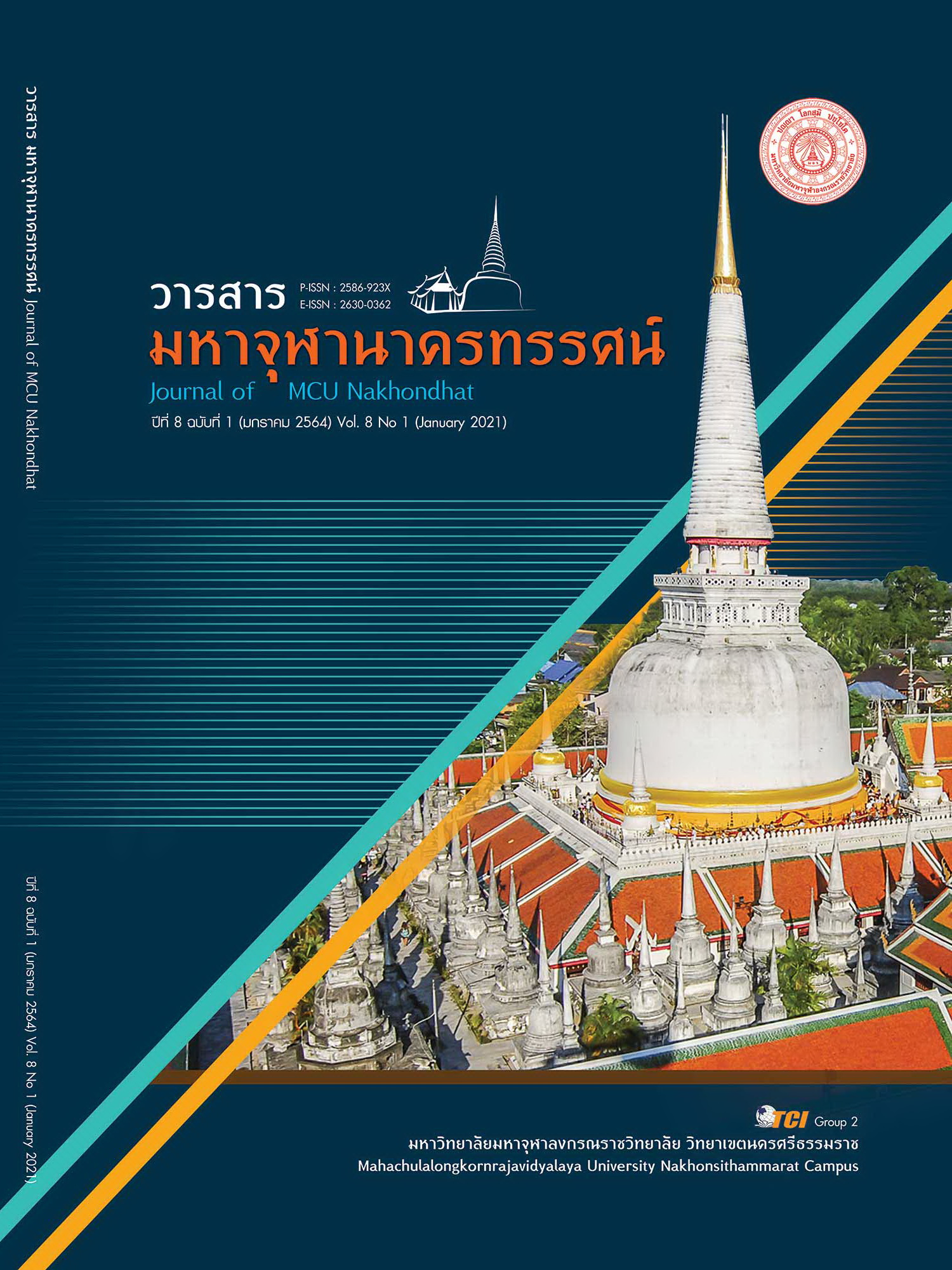DEVELOPMENT OF CULTURAL CAPITAL BY USING A COMMUNITY FOUNDATIOON IN THAILAND’S BORDER AREAS NONG KHAI PROVINCE
Main Article Content
Abstract
This article discusses the development of cultural capital by community based on the Thai border area. Nong Khai Province Have a purpose To study the development of cultural capital by using communities as a foundation in the Thai border area. Nong Khai Province To analyze and assess the development potential of cultural capital by using the community as a foundation in the Thai border area Nong Khai Province And to set guidelines for the development of cultural capital And economic value - added creation of communities in districts, special economic zones, in border areas of Thailand Nong Khai Province. The research results were found that Community - based cultural capital development in the Thai border area Community way of life Thai border communities also respect the elders within the community. Are supportive of each other like relatives Place importance on unity and doing common good within the community The community has a relationship with the water stream, so the water source is preserved. Love and cherish local wisdom Give importance to natural resources Improve and develop the original local wisdom Thai border communities have high moral ties and therefore regularly participate in cultural and traditional activities. Participate in the restoration of ancient sites Together to carry on the ancient traditions Preserve and preserve cultural traditions Communities are ethnically diverse. Therefore has a network of local products Nong Khai Community Organization Council Network Build knowledge and value of local wisdom Exchange knowledge in the community And the value of cultural capital People in the Thai border area believe Therefore respecting the sacred things According to their local area Have a common sense of community And cultivate the beliefs of the community to the future generations.
Article Details
References
กิตติศักดิ์ ปรกติ. (2555). สิทธิของบุคคลซึ่งรวมกันเป็นชุมชน. กรุงเทพมหานคร: สำนักงานศาลรัฐธรรมนูญ.
จักรกวี ซื่อตรง. (2559). การศึกษาวิถีชีวิตชุมชนกับการอนุรักษ์แม่น้ำท่าจีน: กรณีศึกษาชุมชนในตำบล. ใน การประชุมวิชาการระดับชาติ ครั้งที่ 1 (The 1st RUSNC) 22 มิถุนายน 2559. มหาวิทยาลัยเทคโนโลยีราชมงคลสุวรรณภูมิ.
ชนิดา เสงี่ยมไพศาลสุข. (2550). เศรษฐกิจของทรัพย์สินเชิงสัญลักษณ์. กรุงเทพมหานคร: สำนักพิมพ์โครงการจัดพิมพ์คบไฟ.
ณัฐนรี ศรีทอง. (2551). การเพิ่มศักยภาพภาวการณ์เป็นผู้นำในงานพัฒนาชุมชน. กรุงเทพมหานคร: โอ.เอส.พริ้นติ้งเฮ้าส์.
นุทิศ เอี่ยมใส. (2555). ทุนทางศิลปวัฒนธรรมประเพณีกับการพัฒนาความเข้มแข็งของชุมชนในจังหวัดเพชรบูรณ์. ใน รายงายการวิจัย. มหาวิทยาลัยราชภัฎเพชรบูรณ์.
ปาวีณา โทนแก้ว. (2554). การพัฒนาธุรกิจการท่องเที่ยวเชิงวัฒนธรรมชาวเผ่าสีซอ จังหวัดเพชรบูรณ์. ใน รายงานการวิจัย. มหาวิทยาลัยราชภัฎเพชรบูรณ์.
พระศรีรัตนมุนี ใยอินทร์ และนายดาวเหนือ บุตรสีทา. (2559). การเสริมสร้างคุณธรรมจริยธรรมของเยาวชนโดยใช้ทุนวัฒนธรรมท้องถิ่น. ใน รายงานการวิจัยสถาบันวิจัยพุทธศาสตร์. มหาวิทยาลัยมหาจุฬาลงกรณราชวิทยาลัย.
เพ็ญประภา ภัทรานุกรม. (2553). การพัฒนาทุนทางสังคมโดยใช้ชุมชนเป็นฐานในชุมชนประสบภัยพิบัติสึนามิ กรณีศึกษาชุมชนในพื้นที่จังหวัดพังงา. วารสารร่มพฤกษ์, 28(2), 1-34.
เสาวภา ไพทยวัฒน์. (2555). การดำรงอยู่ของวัฒนธรรมชุมชนในสังคมเอง กรณีศึกษาชุมชนซอยโซดาและชุมชนวัดประชาระบือธรรม 1 - 4 เขตดุสิต. ใน รายงานการวิจัย. กรุงเทพมหานคร: มหาวิทยาลัยราชภัฎสวนสุนันทา.


